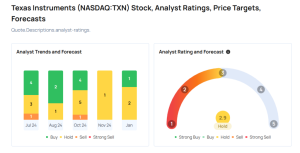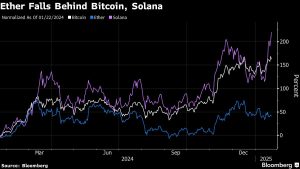
Super Micro Computer (NASDAQ: SMCI), also known as Supermicro, disappointed a lot of investors over the past six months. On March 13, 2024, the server maker’s stock closed at a record high of $1,188.07 as its market cap hit $67 billion.
That marked a stunning gain of 5,080% over the previous four years. Supermicro’s stock had caught fire because it dazzled investors with its brisk sales of high-performance servers for the booming artificial intelligence (AI) market.
But today, Supermicro’s stock trades at about $420 with a market cap of $25 billion. It lost nearly two-thirds of its value amid concerns about its declining gross margin, short-seller allegations, the delayed filing of its annual report, and reports of a potential probe by the U.S. Department of Justice (DOJ). That was a painful pullback for investors who chased Supermicro’s previous rally, but could it overcome these challenges and blossom into a trillion-dollar stock by the end of the decade?
Why did Supermicro’s stock soar?
Supermicro carved out its niche by selling high-performance liquid-cooled servers. That made it a natural partner for Nvidia, which provided Supermicro with its high-end data center GPUs before many other server makers.
Supermicro controls a tiny share of the server market compared to Dell Technologies and Hewlett Packard Enterprise, but its sales of dedicated AI servers surged in recent years as companies scrambled to upgrade their data centers to handle the latest AI applications.
From fiscal 2020 to fiscal 2024 (which ended in June 2024), Supermicro’s revenue grew at a compound annual growth rate (CAGR) of 45% as its adjusted earnings per share (EPS) rose at a CAGR of 68%. It now generates over half of its revenue from dedicated AI servers, and Bank of America analysts expect it to grow its share of that niche market from 10% to 17% within the next three years. Those numbers convinced many investors that Supermicro was a great AI play like Nvidia.
Why did Supermicro’s stock crash?
Supermicro established an early mover’s advantage in the dedicated AI server market, but Dell and HPE are now ramping up their production of similar high-end servers powered by Nvidia’s GPUs. Supermicro also sells its AI servers at a lower gross margin than its non-AI servers, so the rapid expansion of its AI server business is actually a double-edged sword.
That’s why Supermicro’s adjusted gross margin shrank from 15.9% in fiscal 2020 to 14.2% in fiscal 2024. That contraction is troubling because HPE and Dell are larger companies that can afford to sell their AI servers at lower margins.
In late August, Hindenburg Research, which specializes in short-selling stocks, accused Supermicro of inflating its revenue with partial orders. Supermicro denied those allegations but delayed its 10-K filing for fiscal 2024 around the same time Hindenburg’s report was released because it needed “additional time” to assess its “internal controls over financial reporting.” The DOJ might be investigating Supermicro over that delay, according to reporting by The Wall Street Journal, but the DOJ has neither confirmed nor denied that report.
The news of those potential setbacks triggered Supermicro’s steep drop over the past few months. Because Hindenburg has a vested interest in Supermicro doing poorly, investors should take its allegations with a grain of salt. Still, Supermicro has been previously delisted from the Nasdaq due to accounting issues in 2018, and it was only relisted in 2020 upon reaching a settlement with the U.S. Securities and Exchange Commission (SEC).
Where will Supermicro’s stock be in six years?
Those unresolved issues could force analysts to rein in their long-term sales estimates. It’s also unclear if it can maintain a stable gross margin while keeping pace with HPE and Dell in the growing AI server market.
But for now, Wall Street is still mostly bullish on Supermicro. Of the 20 analysts who cover the stock, only one rates it as a sell. From fiscal 2024 to fiscal 2026, analysts expect its revenue to grow at a CAGR of 46% as its EPS (excluding the impact of its upcoming 10-for-1 stock split on Sept. 30) increases at a CAGR of 39%.
Those are impressive estimates for a stock that trades at just 14 times this year’s earnings. Dell and HPE, which are growing much slower than Supermicro, trade at 16 and 10 times forward earnings, respectively. However, Supermicro’s valuations are still being compressed by the near-term macro, competitive, and regulatory headwinds.
Could Supermicro become a trillion-dollar stock?
In a best-case scenario, Supermicro might match the consensus forecasts and grow its EPS at a robust CAGR of 25% from fiscal 2026 to fiscal 2030. If that happens and it trades at a more bullish 25 times earnings, its stock could rally roughly 465% and boost its market cap to nearly $134 billion by the end of the decade. That would be more than double its all-time high, but it would fall woefully short of joining the 12-zero club.
So instead of wondering if Supermicro will ever become a trillion-dollar AI stock, investors should see if it can overcome its current challenges. If it fails to stabilize its gross margin and counter the short-seller and regulatory challenges, its stock could stall out and underperform its industry peers over the next six years.
Should you invest $1,000 in Super Micro Computer right now?
Before you buy stock in Super Micro Computer, consider this:
The Motley Fool Stock Advisor analyst team just identified what they believe are the 10 best stocks for investors to buy now… and Super Micro Computer wasn’t one of them. The 10 stocks that made the cut could produce monster returns in the coming years.
Consider when Nvidia made this list on April 15, 2005… if you invested $1,000 at the time of our recommendation, you’d have $743,952!*
Stock Advisor provides investors with an easy-to-follow blueprint for success, including guidance on building a portfolio, regular updates from analysts, and two new stock picks each month. The Stock Advisor service has more than quadrupled the return of S&P 500 since 2002*.
*Stock Advisor returns as of September 30, 2024
Bank of America is an advertising partner of The Ascent, a Motley Fool company. Leo Sun has no position in any of the stocks mentioned. The Motley Fool has positions in and recommends Bank of America and Nvidia. The Motley Fool recommends Nasdaq. The Motley Fool has a disclosure policy.
Will Super Micro Computer Be a Trillion-Dollar Stock by 2030? was originally published by The Motley Fool


